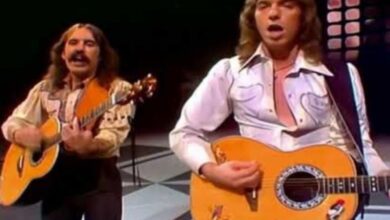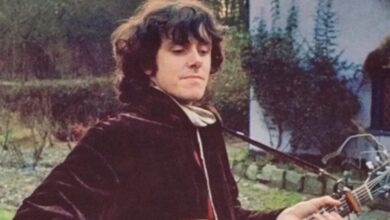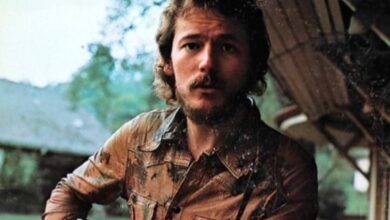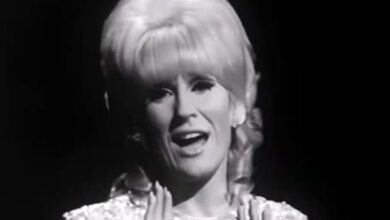Brian May and Andrea Bocelli Deliver a Breathtaking Rendition of “Who Wants to Live Forever” in Honor of Freddie Mercury
Andrea Bocelli’s 2024 Teatro del Silenzio concerts were designed as a celebration of his thirty-year career, but no one could have predicted just how magical one particular night would become. When Brian May stepped onto the stage to join Bocelli for a duet of “Who Wants to Live Forever,” the atmosphere shifted from extraordinary to transcendent. The combination of Bocelli’s operatic tenor and May’s iconic guitar instantly promised something rare—two distinct musical worlds colliding in perfect harmony under the Tuscan sky.
The Teatro del Silenzio itself added to the aura of the performance. Built into the rolling hills of Bocelli’s hometown of Lajatico, the venue is dormant for most of the year and awakens only for this singular annual concert. Its natural amphitheater provided a backdrop that was both intimate and grand, amplifying the sound in a way that made every note feel larger than life. When May’s guitar strings intertwined with Bocelli’s soaring vocals, it was as though the land itself was resonating with them.
“Who Wants to Live Forever” carries deep meaning within the Queen canon. Originally written by May for the 1986 film Highlander, it reflects on love, mortality, and the inevitable passage of time. Its orchestral sweep and haunting melody have always invited dramatic interpretations, but hearing Bocelli’s voice deliver the lines gave the song a different weight. It became less of a rock ballad and more of a cinematic prayer, shimmering with both grief and hope.
From the moment the first notes rang out, the crowd sensed they were witnessing history. Bocelli’s tenor glided across the melody with elegance, while May added harmony vocals and his signature guitar lines. It wasn’t just a cameo appearance—it was a genuine collaboration. At points, it felt like May was passing the song forward, entrusting it to Bocelli, while still anchoring it with the authenticity only its composer could provide.
As the song unfolded, there was a tangible connection between the two artists. Earlier that week, May had shared a rehearsal clip where he patiently guided Bocelli through a guitar phrase, and that camaraderie spilled onto the stage. There was no ego, no sense of competition—only respect and curiosity. Two masters from different traditions were meeting at the midpoint, creating something neither could have achieved alone.
The audience, composed of fans from around the world, responded with the kind of hushed reverence reserved for sacred moments. You could feel the air shift as the music built, moving from delicate lines into sweeping crescendos. Then, when the final chords faded, the silence broke into roaring applause—waves of gratitude crashing through the amphitheater, the kind of ovation that carries both admiration and relief for having witnessed something so unrepeatable.
What made the performance even more poignant was its context within Bocelli’s “30: The Celebration” concerts. These were milestone evenings, filled with star-studded duets and special guests ranging from Ed Sheeran to Shania Twain. But May’s appearance was uniquely powerful. He wasn’t just a guest; he was the author of the very song they performed. That authenticity gave the duet a sense of permanence, as if the night had been written into music history the moment he walked onstage.
The song itself seemed reborn in that setting. With Bocelli leading the melody, it took on new dimensions, emphasizing tenderness where Queen’s original leaned into drama. May’s presence grounded it in rock tradition, but Bocelli elevated it with operatic grandeur. The interplay made the piece feel alive again, reminding listeners that great music is not static—it evolves when artists are brave enough to reimagine it together.
When the professionally filmed video of the performance was released, fans across the globe finally had the chance to experience what the Tuscan crowd had seen firsthand. The camera work captured everything: May’s fingers on the Red Special, the glistening strings of the orchestra, Bocelli’s face illuminated by the stage lights, and the collective emotion of the audience. Watching from afar, fans were pulled into that hillside amphitheater, able to feel the magic as if they were seated there.
The release also preserved the performance as part of the larger concert film Andrea Bocelli 30: The Celebration. This ensured the duet would not fade into myth or memory but remain accessible as part of Bocelli’s career tapestry. In program notes, the performance with May was singled out as one of the highlights of the series, cementing its importance among a roster of already impressive collaborations.
Online reactions echoed the reverence felt in the amphitheater. Rock fans marveled at Bocelli’s interpretation, classical fans applauded May’s emotional playing, and countless viewers simply called it “pure magic.” One comment captured the essence perfectly: “To hear the writer of this song sing it, and then to have Andrea carry Freddie’s part—it’s goosebumps from start to finish.” The universality of that reaction proved the performance had broken down every barrier between genres and audiences.
Beyond the grandeur, what lingered most was the warmth between the performers. Their interaction reminded audiences that music is a shared language, one that thrives on respect and curiosity. May, a rock icon, and Bocelli, the world’s most famous tenor, seemed to revel in each other’s strengths. That humility and joy made the performance not just technically impressive, but deeply human.
The duet also deepened the legacy of “Who Wants to Live Forever.” For decades, it has stood as one of Queen’s most haunting and emotional works, but this performance reframed it for a new generation. Instead of only being tied to its cinematic origins or Mercury’s unforgettable delivery, it became something broader—a song about love and mortality that could live just as comfortably in an opera house as it did in a rock arena.
Ultimately, the performance was more than a highlight of Bocelli’s anniversary concerts. It was a cultural event, a testament to the timelessness of Queen’s music, and a reminder of the possibilities when artists are unafraid to cross boundaries. For those in Tuscany that night, it was a memory they would never forget. For those watching worldwide, it was proof that music’s greatest gift is its ability to connect hearts, no matter the genre.
The wider release of the duet in 2025, under Decca Records and Mercury Studios, ensured that this extraordinary collaboration would endure far beyond its summer debut. It now lives not just as a special moment in Bocelli’s annual festival, but as part of the living legacy of both artists. It stands as an example of what can happen when rock’s grandeur and classical lyricism meet, not in competition, but in harmony.





